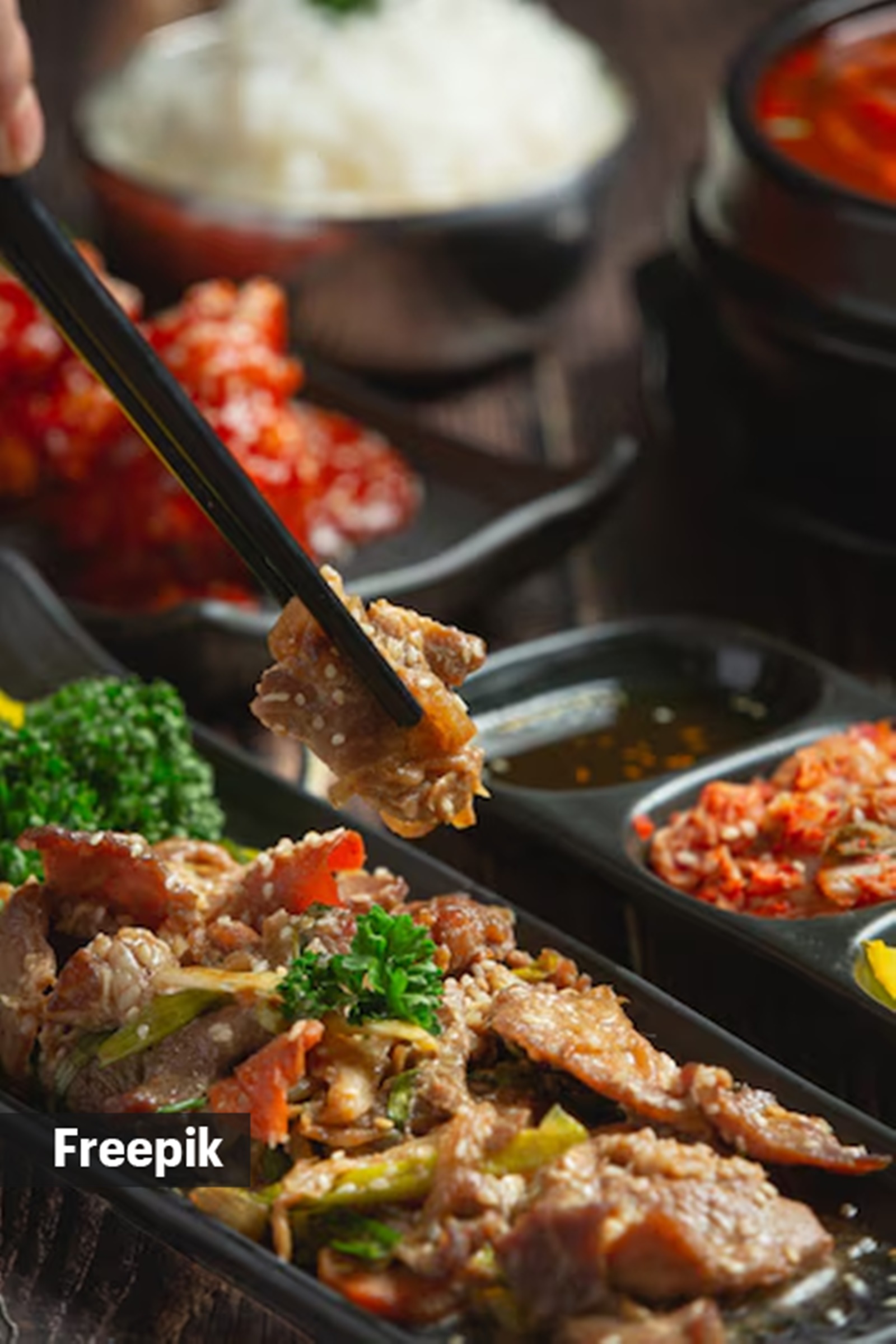The Korean cultural phenomenon has been sweeping throughout India, fascinating tens of millions with its electrifying music, trendsetting trend, and, in fact, scrumptious meals. Popularised primarily by Korean tv collection, often known as Ok-dramas, Korean meals has enchanted Indians folks with its distinctive style, spiciness and recent substances.
What started as a distinct segment curiosity has since blossomed right into a full-fledged cultural phenomenon, with Korean meals quickly gaining mainstream acceptance all through India. “The recognition of Ok-dramas in India has significantly increased the demand for Korean food, pushed by the portrayal of Korean delicacies in these reveals,” says Garima Dev Verman, licensed nutritionist and medical content material analyst with The Wholesome Indian Mission (THIP).
Whereas ramen could have been the preliminary gateway to Korean delicacies for a lot of Indians, lesser-known dishes like kimchi, spicy ramen, bibimbap, buldak and tteokbokki have seen notable rise in reputation. “The worldwide Hallyu wave, encompassing Korean popular culture together with Ok-pop music, has additional amplified curiosity in all issues Korean, their meals too,” she mentioned.
On the forefront of this culinary revolution is the rising variety of Korean eating places, every striving to introduce genuine flavours and strategies to the Indian palate. Influencers and celebrities sharing their experiences with Korean delicacies “have additionally performed a vital position,” in accordance with Verman. She additionally mentioned the supply of Korean ready-to-eat merchandise in Indian supermarkets “has made Korean delicacies extra accessible”.
“Whereas bibimbap and kimchi at the moment are extensively recognised and loved, different dishes corresponding to kimbap (Korean sushi rolls) and jjigae (Korean stews) are additionally gaining traction,” notes Badal Saboo, accomplice at Gung The Palace, an genuine Korean restaurant in Noida.
Banchan, a wide range of small facet dishes served alongside fundamental programs, provides a various tasting expertise. Japchae, produced from candy potato noodles blended with greens and meat, supplies a novel flavour profile that appeals to native palates. Samgyeopsal, grilled pork stomach wrapped in lettuce leaves, has additionally discovered a distinct segment amongst those that respect hearty and flavourful meals. These expanded choices mirror the rising sophistication and curiosity of Indian shoppers concerning Korean delicacies.
Alignment of dietary profiles of conventional Korean dishes with the dietary preferences in India
The dietary profile of conventional Korean dishes and the emphasis on fermentation and pure preservation strategies in Korean cooking aligns with Indian dietary preferences and well being advantages.
Chef Dheeraj Mathur, cluster govt chef, Radisson Blu, Kaushambi, Delhi NCR, shares that these days, kids favor wholesome meals even when they’re consuming out. Korean delicacies additionally usually incorporates dishes which have low-fat content material. “Korean meals has sure well being advantages related to it, use of substances corresponding to tofu, a wide range of micro-greens, and seafood ensures a superb consumption of nutritional vitamins, minerals, and proteins, and conventional Korean dishes like kimchi, a staple in Korean delicacies, is rich in probiotics which helps in easy digestion.”

Shriya Nayak, proprietor of Mamba Resto Bar in Thane, agrees. “The emphasis on seasonal meals and a wide range of textures speaks to India’s rising curiosity in plant-based diets and wholesome consuming.”

Challenges confronted when sourcing genuine Korean substances in India
Sustaining true authenticity of the delicacies generally is a problem, as many key substances should not available or should be imported, driving up prices.
Saboo agrees that cooks in India face a number of challenges when sourcing genuine Korean substances, primarily as a consequence of their restricted availability and the excessive import prices related to key gadgets corresponding to gochujang (Korean chilli paste) and doenjang (fermented soybean paste). “To beat these difficulties, cooks usually use domestically accessible substitutes, corresponding to Indian radish instead of Korean radish for kimchi, and domestically grown Napa cabbage and Korean chilli peppers.”
Concurring, Chef Shankar Krishnamurthy, co-founder and director of Culinary Ops and Chef Relations, Guide My Chef, mentioned that ingredient availability in India will be restricted. “Strong commerce and rising demand” are bettering the state of affairs, he mentioned, particularly in main metropolitan areas.
Chef Mathur, nonetheless, differs. He says sourcing Korean ingredients is not that difficult right now. “Elevated reputation and elevated demand has led supermarkets and on-line platforms to maintain the required merchandise as per the viewers’s curiosity.” He additionally mentioned that Korea has elevated manufacturing to fulfill the export calls for and enhanced their buying and selling route.
Adapting menus to cater to Indian dietary preferences
A chef’s experience lies in understanding native palates and adapting flavours accordingly. So, one other roadblock that many Korean cooks face is the prominence of pork and beef in conventional Korean dishes. Due to this, menu diversifications have develop into a necessity to cater to Indian dietary preferences, together with vegetarian choices and excluding sure meats.
Regardless of these challenges, Korean restaurateurs in India have embraced artistic diversifications, discovering revolutionary methods to fuse native flavours with conventional Korean recipes. “Menus in India are usually modified to accommodate native dietary necessities by providing a selection of vegetarian options and omitting particular meats, as Korean delicacies regularly incorporates pig and beef,” says Nayak.
For vegetarian variations of meat-based dishes, Chef Mathur explains, alternatives like mushrooms, tofu, or paneer are used to replicate textures and flavours with out compromising on authenticity. “For instance Bulgogi, a standard dish made with beef, will be ready utilizing hen and even paneer to go well with native style,” he mentioned.
For many who keep away from sure meats, Saboo talks about using pork-free and beef-free variations of widespread dishes like bulgogi (marinated grilled meat) and galbi (marinated quick ribs). Fusion dishes corresponding to paneer kimchi stir-fry, mix Indian substances with Korean cooking strategies, guaranteeing the delicacies is each genuine and appropriate for native dietary restrictions.
© IE On-line Media Companies Pvt Ltd
First uploaded on: 14-06-2024 at 15:37 IST


